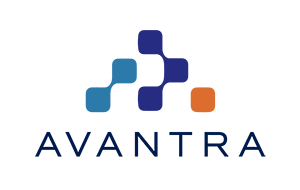Filter By
Browse By
- SAP Analytics and AI
- SAP Application Development and Integration
- All SAP Application Development and Integration
- SAP ABAP
- SAP ABAP Development Tools
- SAP ABAP Test Cockpit
- SAP API Management
- SAP BAPI
- SAP Basis
- SAP BRF
- SAP Business Application Studio
- SAP CMS
- SAP Design Studio
- SAP Development Tools
- SAP DevOps
- SAP EAI
- SAP EDI
- SAP Extension Suite
- SAP Fiori
- SAP Fiori Elements
- SAP Integration Suite
- SAP Low Code Application Development
- SAP Low Code Automation
- SAP Netweaver
- SAP Release Management
- SAP UI5
- SAP Web Application Server
- SAP Web IDE
- SAP Business Process Management
- SAP Center of Excellence
- SAP CIO
- SAP Customer Experience
- SAP Data and Data Management
- All SAP Data and Data Management
- SAP BW
- SAP BW/4HANA
- SAP Crystal Reporting
- SAP Data Archiving
- SAP Data Center
- SAP Data Governance
- SAP Data Integration
- SAP Data Migration
- SAP Data Quality
- SAP Data Services
- SAP Data Strategy
- SAP Data Visualization
- SAP Data Warehouse Cloud
- SAP DMS
- SAP Document Control
- SAP EIM
- SAP ETL
- SAP ETL Tools
- SAP HANA
- SAP HANA Administration
- SAP HANA Deployment Infrastructure
- SAP HANA Studio
- SAP Master Data
- SAP Master Data Governance
- SAP MDM
- SAP Enterprise Architect
- SAP Enterprise Asset Management
- SAP ERP
- SAP Finance
- All SAP Finance
- SAP Accounting
- SAP AR AP
- SAP Asset Accounting
- SAP Billing Systems
- SAP BPC
- SAP BRIM
- SAP Cash Management
- SAP Central Finance
- SAP Controlling
- SAP COPA
- SAP Cost Center Accounting
- SAP e-invoicing
- SAP FICO
- SAP Finance Automation
- SAP Financial Closing Cockpit
- SAP Financial Consolidation
- SAP Financial Planning
- SAP FX Risk
- SAP General Ledger
- SAP Global Tax Management
- SAP Hyperion
- SAP Order to Cash
- SAP Payment Processing
- SAP Profitability Analysis
- SAP Rebate Management
- SAP S/4HANA Finance
- SAP Universal Journal
- SAP Governance Risk and Compliance
- SAP Human Capital Management
- SAP Intelligent Technologies
- SAP Platform and Technology
- All SAP Platform and Technology
- SAP Business Technology Platform
- SAP Cloud Connector
- SAP Cloud Integration Platform
- SAP Cloud Migration
- SAP Cloud Platform
- SAP Cloud Providers
- SAP Cloud Strategy
- SAP Container Platform
- SAP Digital Asset Management
- SAP Digital Integration Hub
- SAP Digital Signature
- SAP HANA Enterprise Cloud
- SAP HEC
- SAP Hyperscalers
- SAP Infrastructure
- SAP Messaging
- SAP Smart Forms
- SAP Quality and Testing
- SAP Security
- SAP Spend Management
- SAP Supply Chain Management
- All SAP Supply Chain Management
- SAP APO
- SAP Asset Management
- SAP Business Network
- SAP Digital Manufacturing Cloud
- SAP Digital Twin
- SAP EWM
- SAP IBP
- SAP Inventory Management
- SAP Label Printing
- SAP Logistics
- SAP Manufacturing
- SAP Manufacturing Automation
- SAP MES
- SAP MII
- SAP MM
- SAP MRO
- SAP MRP
- SAP Order Management
- SAP Plant Maintenance
- SAP PLM
- SAP Production Planning
- SAP S&OP
- SAP SD
- SAP SPM
- SAP Supply Chain Planning
- SAP Track and Trace
- SAP Transportation Management
- SAP System Administration
SAP System Administration
With the criticality of SAP to the enterprise and the increasing complexity of SAP landscape, SAP Systems Administration is an increasingly vital function. Not only does this function have to manage today’s complex migrations including to SAP S/4HANA, they also have to ensure frequent updates and upgrades smoothly.
On a day-to-day basis, SAP Systems Administrators are are responsible for ensuring performance, reliability, and support of SAP application environments. Understanding the technical infrastructure standards and integration requirements is critical part of their job. They should also be managing capacity and ensuring performance along with the changing needs of the business such as seasonality. With the advent of cloud deployments, they often manage cloud capacity planning as well.
SAP System Administration
With the criticality of SAP to the enterprise and the increasing complexity of SAP landscape, SAP Systems Administration is an increasingly vital function. Not only does this function have to manage today’s complex migrations including to SAP S/4HANA, they also have to ensure frequent updates and upgrades smoothly.
On a day-to-day basis, SAP Systems Administrators are are responsible for ensuring performance, reliability, and support of SAP application environments. Understanding the technical infrastructure standards and integration requirements is critical part of their job. They should also be managing capacity and ensuring performance along with the changing needs of the business such as seasonality. With the advent of cloud deployments, they often manage cloud capacity planning as well.
SAP Systems Administrators monitor the performance of system applications. Automation and monitoring of performance, including new solutions such as AIOps, have entered the field.
With the pace of upgrades and updates ramping up, their role in change and release management has also become complex. They perform migration tasks such as change request review, software builds, release documentation, production issue resolution and tracking report distribution. This article Speed Up Process Change for SAP ERP talks about how to make ERP updates more agile.
In addition, they have a major role in developing and executing contingency plans in the event of system outages. They may have disaster recovery and business continuity plans and tools to ensure minimum loss to the business. They also provide support to the Service Desk.
SAP Systems Administrators are a key resource during deployment of new solutions and infrastructure. They often liaise with software vendors about security patches and updates. They develop plans to install these patches and test them. Keeping up with security patches and updates is very critical, as without them, the company is vulnerable to attacks. Read this article to understand the challenges of patching.
498 results
-

 Premium
Premium
A Simplified Approach to Archiving Your Data
Reading time: 12 mins
Learn to set up an easy process to remove data that is no longer needed from your SAP system. It keeps your system space free for new data and improves performance without the need to add system resources. Key Concept You use archiving objects to archive files. The archiving object provides the data structure and…...…
-

 Premium
Premium
Leveraging the SuccessFactors Employee Central Rules Engine to Meet Solution Requirements
Reading time: 15 mins
Learn how to leverage the rules engine within SuccessFactors Employee Central. Configuring rules within Employee Central can be very useful for projects to be able to meet unique and company-specific requirements within their organization. Having a good understanding of the rules engine and its capabilities allows project teams to accelerate their understanding of the capabilities…...…
-

SAP HANA Administration Chat: Kurt Hollis on Architecture, Monitoring, and More
Reading time: 40 mins
SAP HANA is an in-memory database engine and application platform that offers unique advantages for reporting and high-performance operations. Customers have to answer many questions in their path to running on SAP HANA. How can architect your SAP HANA solution to fit your needs? Once you are up and running, how can administrators monitor the…...…
-
-

 Premium
Premium
How to Archive Info Structures in SAP for Retail
Reading time: 17 mins
In a major retail site or store, data from point of sale (POS), the front-end system in the retail industry, is stored in multiple SAP tables and shares relevant data as a single POS database, known as an information structure (info structure). Because the database grows rapidly, it slows the SAP retail system and requires…...…
-

 Premium
Premium
Align SAP Time Management with Your Company’s Time Quota Requirements
Reading time: 12 mins
Comply with your employee negative leave deduction policies with this tutorial. Analyze how year-end adjustments affect SAP ERP and learn how to configure negative leave deduction properly. Key Concept Time quota in SAP R/3 refers to an employee’s leave entitlement. An HR time administrator generates and awards leave entitlement to an employee on a daily,…...…
-

 Premium
Premium
Effortlessly Manage Your Service-Oriented Architecture Landscape with SOA Manager
Reading time: 16 mins
Discover how to create templates for services configuration (profiles). Then see how to apply these templates (bundled in a business scenario) to services to create endpoints together instead of separate endpoint creation for each service. Service-oriented architecture (SOA) Manager, as a configuration tool for ABAP Web Services, offers additional configuration objects to easily carry out…...…
-

 Premium
Premium
How to Configure Eligibility Conditions in SAP ERP HCM Benefits
Reading time: 18 mins
Learn about the processes, configuration, and usage related to both dynamic and fixed benefits eligibility conditions in the SAP ERP HCM Benefits module. If a non-SAP system provides the time capture functionality, then infotype 2001 (attendance) has to be populated with the attendance hours for the dynamic eligibility functionality to work. Discover how to configure…...…
-
-

Solving Training Administration Challenges by Setting Up Organizational and Job Structures in SAP SuccessFactors Learning
Reading time: 6 mins
Learn how setting up organizational units and job codes can help overcome some of the common SAP SuccessFactors Learning administration challenges. Use these simple steps to implement organizational units and job structures in the SAP SuccessFactors Learning Management System (LMS) module. This content is for Basic Access, SAPinsider Monthly Subscription, SAPinsider Annual Subscription, and SAPinsider…
-

Improve Your System Performance by Archiving Data in BW: Part 1
Reading time: 14 mins
Archiving BW data reduces its volume, resulting in faster loads and queries. This first article of a three-part series explains the entire process to archive ODS or InfoCube data step by step. Key Concept Archiving is available with BW Release 3.0B and above. You can archive from InfoCubes and ODS tables, but currently you cannot…...…
-

 Premium
Premium
Simplify Maintenance and Security with User Groups
Reading time: 9 mins
User groups are a convenient technique to group users and treat them as one entity in terms of their privileges and behavior. See a method for setting them up in your system with some considerations from a security and user administration perspective. Key Concept Users can be grouped in different combinations such as those associated…...…
Featured Insiders
-

Varun Bhatt
Partner - SAP Rise
-

Akash Kumar
Associate General Manager, HCL
-

Harry Aujla
Director of Partner Alliances, SIOS Technology Corp
Become a Member
Unlimited access to thousands of resources for SAP-specific expertise that can only be found here.
Upcoming Events
Related Vendors
Your request has been successfully sent


